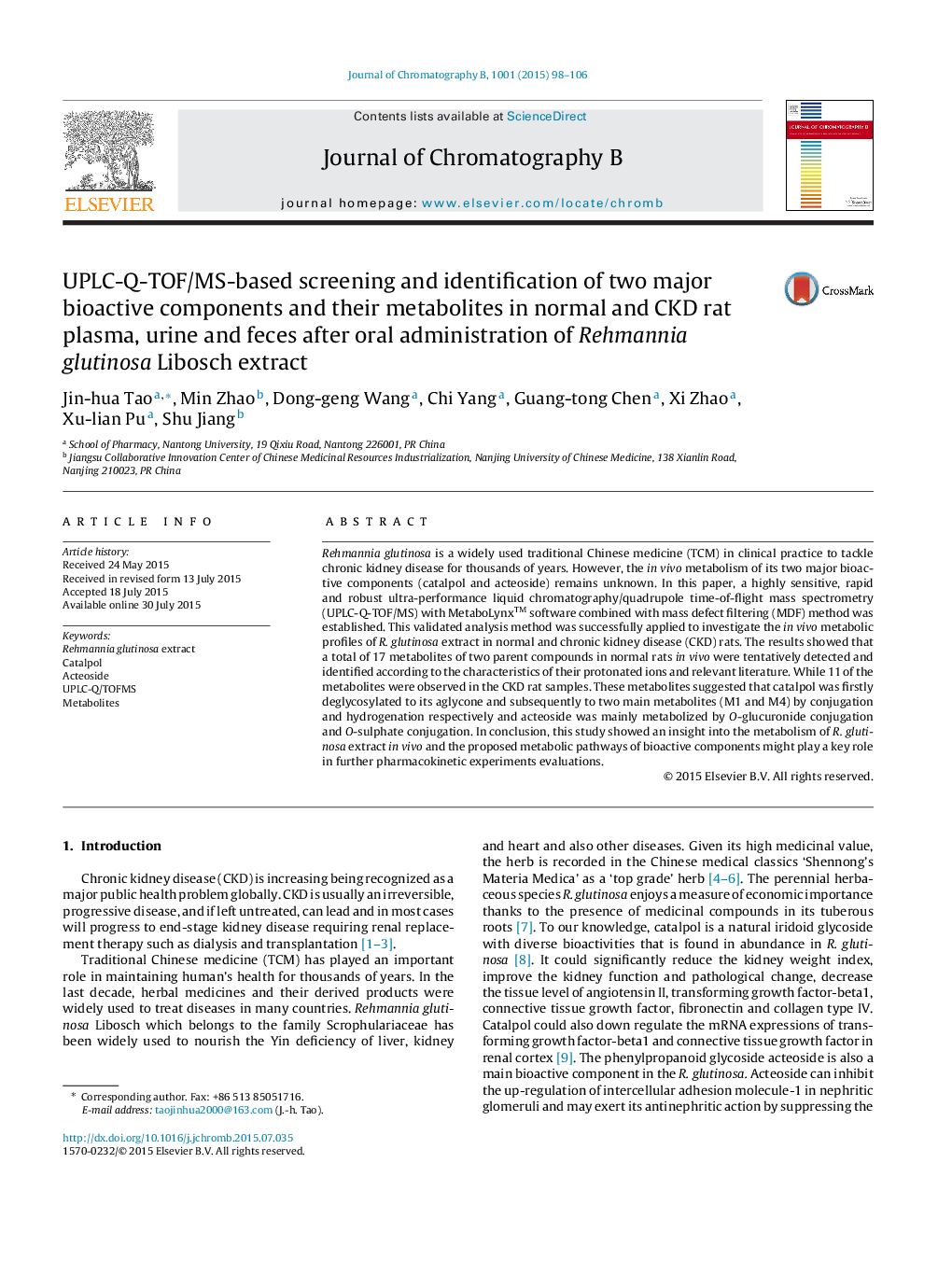| Article ID | Journal | Published Year | Pages | File Type |
|---|---|---|---|---|
| 1214928 | Journal of Chromatography B | 2015 | 9 Pages |
•Doxorubicin was used to induce the chronic kidney disease rats.•Metabolites in rat after taking orally of Rehmannia glutinosa Libosch were detected.•UPLC-Q-TOF/MS with MetaboLynx™ software combined with MDF method was established.
Rehmannia glutinosa is a widely used traditional Chinese medicine (TCM) in clinical practice to tackle chronic kidney disease for thousands of years. However, the in vivo metabolism of its two major bioactive components (catalpol and acteoside) remains unknown. In this paper, a highly sensitive, rapid and robust ultra-performance liquid chromatography/quadrupole time-of-flight mass spectrometry (UPLC-Q-TOF/MS) with MetaboLynx™ software combined with mass defect filtering (MDF) method was established. This validated analysis method was successfully applied to investigate the in vivo metabolic profiles of R. glutinosa extract in normal and chronic kidney disease (CKD) rats. The results showed that a total of 17 metabolites of two parent compounds in normal rats in vivo were tentatively detected and identified according to the characteristics of their protonated ions and relevant literature. While 11 of the metabolites were observed in the CKD rat samples. These metabolites suggested that catalpol was firstly deglycosylated to its aglycone and subsequently to two main metabolites (M1 and M4) by conjugation and hydrogenation respectively and acteoside was mainly metabolized by O-glucuronide conjugation and O-sulphate conjugation. In conclusion, this study showed an insight into the metabolism of R. glutinosa extract in vivo and the proposed metabolic pathways of bioactive components might play a key role in further pharmacokinetic experiments evaluations.
Graphical abstractFigure optionsDownload full-size imageDownload as PowerPoint slide
